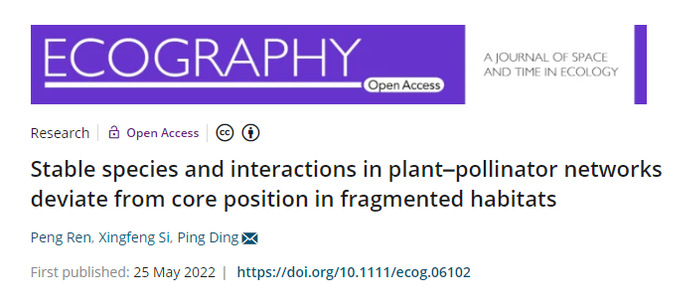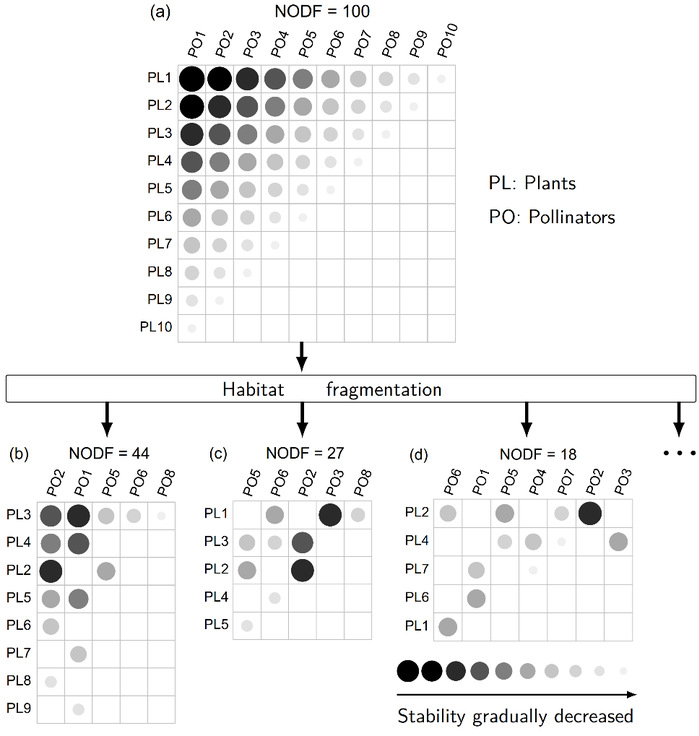
Title: A novel kinase subverts Aluminum resistance by boosting Ornithine decarboxylase-dependent putrescine biosynthesis
Peng Ren, Xingfeng Si, Ping Ding
First published: 25 May 2022
https://doi.org/10.1111/ecog.06102
Abstract
Species and their interactions are more dynamic over time and space in fragmented habitats than in continuous habitats. In fragmented habitats, the low nestedness of mutualistic networks may be related to the position change of stable (high persistence over time/space) species and interactions in the networks. Previous studies have shown that stable species and interactions tend to be in the core position of mutualistic networks. However, in fragmented habitats, it remains unknown whether stable species or interactions still tend to be in the core position. To address this gap, here we evaluated the correlation between the position of proximity to the network core and the temporal/spatial stability of species and interactions, using the observation of 42 plant–pollinator networks conducted in a fragmented island landscape over 3 years. We showed that temporally/spatially stable species and interactions deviated from the network core to varying degrees. Temporally stable plants were most likely to deviate from the network core, followed by pollinators and interactions, while only spatially stable pollinators tend to deviate from the network core. When unstable species (present in few time/space points, typically specialists) and interactions occupy the network core, they cannot interact with most species in the network as generalists do, resulting in the decrease of network nestedness. Therefore, from the perspective of position and stability, stable species and interactions deviate from the network core in fragmented habitats, which is an important reason for the decrease of nestedness in mutualistic networks. Our study suggests that protecting plants which occupy the core in large plant–pollinator networks is essential for maintaining the network persistence in fragmented habitats.
Link: https://doi.org/10.1111/ecog.06102

Figure 1
The hypothesis is that the effect of habitat fragmentation changes the positions of stable species and interactions, and makes them deviate from the network core. (a) The perfectly nested plant–pollinator networks in continuous habitat, where stable species and interactions tend to be in the core position within the network; (b–d) Networks in fragmented habitats (sub-networks that randomly draw from the perfectly nested network a, where the more stable the species or interactions are, the more likely they are to persist in sub-networks) with low nestedness, where stable species and interactions deviate from the network core.





